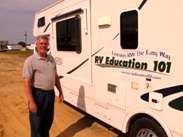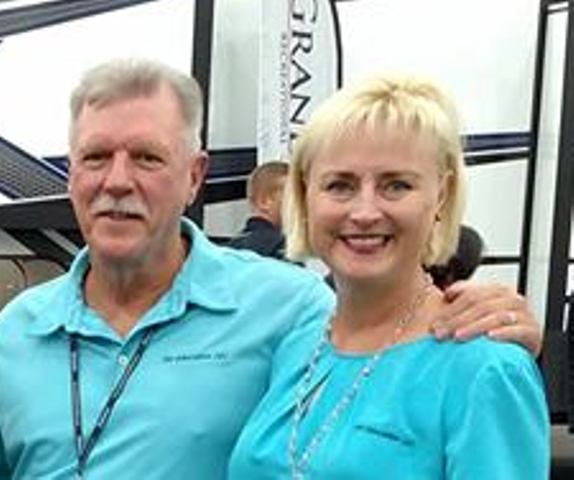March 3, 2009
Prepared by Recreation Vehicle Industry Association
Several positive factors point to recovery when credit availability and job security:
Primary demand for RVs remains robust, as indicated by solid RV rentals and strong RV show attendance this winter. Low consumer confidence and America’s struggling economy are causing consumers to delay major purchase decisions. A delay in purchasing means future sales potential and renewed growth in future shipments.
RV show attendance and sales have encouraged RV dealers and manufacturers. Dealers exhibiting at shows in Florida, Washington, Oregon, Colorado, Kansas, North Carolina, Massachusetts, Michigan, New Jersey, Pennsylvania, Nebraska and Maine reported surprising attendance and sales, which they attributed to pent-up demand and the desire of consumers to burst out of the malaise affecting the economy. Sales exceeded expectations and consumers generally displayed a positive attitude.
The credit worthiness of RV consumers remains at the top of all credit seekers. The delinquency rate on RV loans was 0.95% from 1999-2007 vs. 2.0% for other consumer loans, according to the American Bankers Association Quarterly Delinquency Bulletin. Current limitations on RV credit are expected to gradually diminish over time since RV owners are, on average, excellent credit risks.
Federal economic credit and stimulus packages, which include provisions to stimulate RV lending and friendly tax treatment for new RV purchases, may help promote sales and aid in the RV industry’s economic recovery. One provision in the stimulus bill provides a deduction for sales or excise taxes on the first $49,500 of a new motorhome purchase. Inclusion of RV consumer loans and RV dealer floor plan loans in the Term Asset-Backed Securities Loan Facility (TALF) could ease credit and stimulate RV lending.
RV Shipments and Sales Data
2008 shipments. 2008 RV shipments were down 32.9% from 2007. The industry shipped a total of 237,000 units. Dr. Richard Curtin, Director of Consumer Surveys at the University of Michigan, said that total RV shipments declined in 2008 due to the tightest credit conditions in several decades, higher interest rates, falling household wealth, slower growth in real incomes, and the crisis in consumer confidence.
2009 projection. As the current recession is expected to affect all sectors of the economy, RV shipments are expected to be lower in 2009 as well. Credit restrictions are causing RV buyers to delay purchases and RV dealers to keep inventories low. Sales in 2009 will be affected by stringent credit standards, falling employment, and continued declines in household wealth and home prices. Dr. Curtin predicts 2009 shipments will total 130,100.
Several positive factors point to recovery when credit availability and job security:
Primary demand for RVs remains robust, as indicated by solid RV rentals and strong RV show attendance this winter. Low consumer confidence and America’s struggling economy are causing consumers to delay major purchase decisions. A delay in purchasing means future sales potential and renewed growth in future shipments.
RV show attendance and sales have encouraged RV dealers and manufacturers. Dealers exhibiting at shows in Florida, Washington, Oregon, Colorado, Kansas, North Carolina, Massachusetts, Michigan, New Jersey, Pennsylvania, Nebraska and Maine reported surprising attendance and sales, which they attributed to pent-up demand and the desire of consumers to burst out of the malaise affecting the economy. Sales exceeded expectations and consumers generally displayed a positive attitude.
The credit worthiness of RV consumers remains at the top of all credit seekers. The delinquency rate on RV loans was 0.95% from 1999-2007 vs. 2.0% for other consumer loans, according to the American Bankers Association Quarterly Delinquency Bulletin. Current limitations on RV credit are expected to gradually diminish over time since RV owners are, on average, excellent credit risks.
Federal economic credit and stimulus packages, which include provisions to stimulate RV lending and friendly tax treatment for new RV purchases, may help promote sales and aid in the RV industry’s economic recovery. One provision in the stimulus bill provides a deduction for sales or excise taxes on the first $49,500 of a new motorhome purchase. Inclusion of RV consumer loans and RV dealer floor plan loans in the Term Asset-Backed Securities Loan Facility (TALF) could ease credit and stimulate RV lending.
Shipments history. After five consecutive years of record growth, RV shipments dropped 9.5 percent in 2007 as consumers postponed discretionary purchases due to the U.S. economic slowdown. Shipments totaled 353,400 — the fourth highest in the past quarter century. 390,500 RVs were shipped in 2006, the best annual total in the past 25 years. Total RV shipments in 2006 were 1.6 percent higher than 2005 — the fifth consecutive year shipments grew. RV wholesale shipments totaled 384,400 units in 2005. In 2004 RV shipments topped 370,100. For a historical chart showing RV shipments by year, go to: RVIA Historical Glance.
RV Travel Trends
RV ownership and travel is a great value. The 2008 PKF Vacation Cost comparison study showed that a family of four can save 27-to-61% on vacation costs by traveling in an RV, after factoring in ownership costs and fuel. Even with higher fuel prices, more than 80% of RV owners say their RV vacations cost less than other forms of vacation.
Shorter trips close to home. Research shows that RVers spend more time enjoying campgrounds and less on the road to save fuel. With more than 16,000 campgrounds nationwide, RVers also save by staying closer to home.
Fuel cost analysis. Analysis of potential fuel cost increases shows that fuel prices would need to more than triple over current levels to make RVing more expensive for a family of four than other forms of travel. Airfares and hotel rates are rising rapidly as fuel costs increase. “While fuel costs are a component of the overall vacation cost, fluctuations in fuel prices aren't significant enough to affect a family's decision of whether or not to take RV trips over other types of vacations," said Kannan Sankaran, PKF's lead researcher for the study.
Campgrounds and RV rentals held their own in 2008, despite difficult economic conditions. Campground business remained steady in 2008, down slightly from a record year in 2007. According to the nation’s largest RV rental companies, RV rentals were flat to slightly up in 2008.
Other Factors Behind RV Industry Growth
IRS tax deduction. For most RV buyers, interest on their loan is deductible as second home mortgage interest.
Lifestyle trends continue to spur demand for RVs. RV owners overwhelmingly said in recent surveys that their RV makes it easier to take more frequent weekend getaways or mini-vacations that accommodate busy family schedules. Nine-of-ten RV owners take three or more short trips (1-4 days) in the spring and summer, according to surveys. Research by the Mayo Clinic concluded that Americans need to take mini-vacations from the usual routine to reduce the anxiety, irritability, insomnia and depression that results from excess stress.
Go RVing ads build demand. More than two million consumers have visited GoRVing.com in 2008 as the industry continued its aggressive outreach. The ads have been updated with a new theme line for 2009, “Go Affordably. Go RVing.” Details: GoRVing.com.
Indicators for Future Growth
Population and demographic trends favor long-term RV market growth. Buyers aged 35-54 are the largest segment of RV owners, according to the 2005 University of Michigan study commissioned by RVIA. The demographic tidal wave of prime RV buyers remains strongly in the strongest RV ownership age groups. Every day, 11,000 Americans turn 50, according to U.S. Census figures.
Boomers nearing retirement. RV sales will benefit as aging baby-boomers continue to enter the age range in which RV ownership is highest. According to Dr. Richard Curtin, director of surveys at the University of Michigan, by the end of the decade, the number of consumers aged 50 to 64 will total 57 million — 38 percent higher than in 2000. Today one-in-10 vehicle-owning households in that age group own at least one RV.
RVs are also attractive to young buyers. The fastest growing group of RV owners is young people 18-34. Products such as sports-utility RVs, as well as the Go RVing campaign, have helped attract younger buyers.
RV manufacturers are innovating to give consumers an array of product choices. Manufacturers are producing lightweight towables and smaller, fuel-efficient motorhomes. Green technologies such as solar panels and energy-efficient components are appearing on an increasing number of RVs.
RV ownership has reached record levels. Approximately 8.2 million American households now own an RV — a 16 percent increase since 2001 and a 64 percent gain since 1980.
Vast potential market. By 2010, RVs will be owned by 8.5 million households, outpacing overall U.S. household growth of six percent, the Michigan study forecasts.
Purchase intentions are higher now compared to what the Michigan study found in 2001 and 1997. Two-thirds of current owners plan to purchase another RV. Among all U.S. households, nearly one quarter (23 percent) intend to purchase an RV in the future. Details
WEBSITES: www.RVIA.org www.GoRVing.com
MORE INFORMATION:
Kevin Broom
Director of Media Relations
Recreation Vehicle Industry Association
703-620-6003, ext. 304
kbroom@rvia.org
Subscribe to:
Post Comments (Atom)







No comments:
Post a Comment